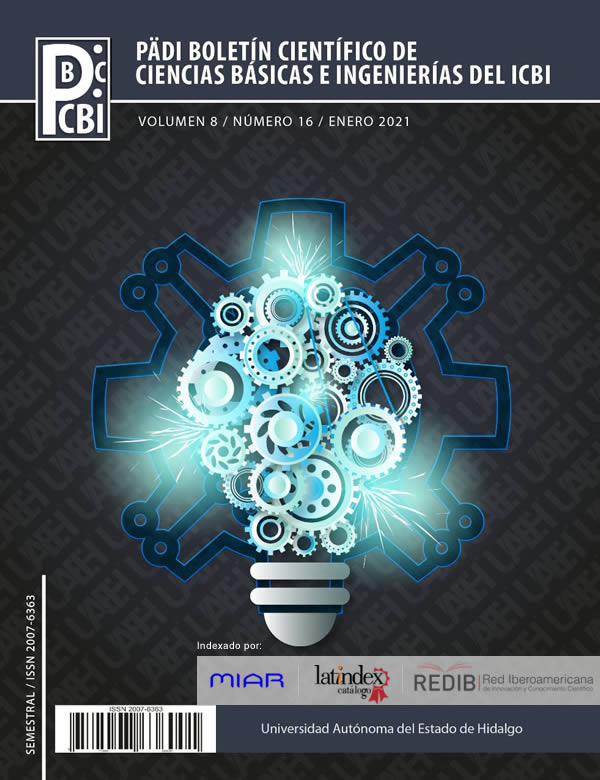El virus que hace quedarte en casa
DOI:
https://doi.org/10.29057/icbi.v8i16.5763Palabras clave:
Virus, Virión, CoronavirusResumen
En este trabajo se presenta una exposición sencilla de lo que son los virus y una explicación de porqué pueden causar un daño en las células hospedadoras. De igual forma se establecen las generalidades del virus SARS-CoV-2, el cual pertenece a los virus de RNA; en los albores del 2020, este virus ha puesto en alerta a todo el orbe por su alta morbilidad; éste provoca la enfermedad denominada COVID-19. En particular se describen las fases del proceso de infección del nuevo coronavirus dentro de un organismo.
Descargas
Información de Publicación
Perfiles de revisores N/D
Declaraciones del autor
Indexado en
- Sociedad académica
- N/D
Citas
Anthony, S. J., Epstein, J. H., Murray, Kris, A., Navarrete, I., Zambrana, T. C. M., Solovyov, A., Ojeda, F. R., Arrigo, N. C., Islam, A., Ali, K., Shahneaz, 2013. A Strategy to Estimate Unknown Viral Diversity in Mammals. American Society for Microbiology 4(5). DOI: 10.1128/mBio.00598-13.
Ahmed, F., 2008. Profile of Bonnie L. Bassler. Proceedings of the National Academy of Sciences of the United States of America 105(13):4969-4971. DOI: 10.1073/pnas.0705870105.
Backer, J. A., Klinkenberg, D., Wallinga, J., 2020. Incubation period of 2019 novel coronavirus (2019-nCoV) infections among travellers from Wuhan, China, 20-28 January 2020. Euro Surveill 25(5):2000062. DOI:10.2807/1560-7917.ES.2020.25.5.2000062.
Berend, J. B., Ruurd, van der Z., Cornelis, A. M. de H., Peter, J. M. R., 2003. The Coronavirus Spike Protein Is a Class I Virus Fusion Protein: Structural and Functional Characterization of the Fusion Core Complex. Journal of Virology, 77(16): 8801-8811; DOI: 10.1128/JVI.77.16.8801-8811.2003.
Delgado, O. M. I., Hernández, M. J. L. (2015) Los virus, ¿son organismos vivos? Discusión en la formación de profesores de Biología. VARONA, 61: 1-7. URL: https://www.redalyc.org/pdf/3606/360643422007.pdf
Dong, Y., Mo, X., Hu, Y., Qi, X., Jiang, F., Tong, S., 2020. Epidemiological characteristics of 2143 pediatric patients with 2019 coronavirus disease in China. Pediatrics. DOI: https://doi.org/10.1542/peds.2020-0702.
International Committee on Taxonomy of Viruses, 2019. ICTV Master Species List 2019.v1, URL: https://talk.ictvonline.org/files/master-species-lists/m/msl/9601
Lazcano, A. (2015). Origen y evolución de los virus: ¿Genes errantes o parásitos primitivos? En: Mensaje Bioquímico, 34: 73-84 URL: http://metabase.uaem.mx/bitstream/handle/123456789/1471/280_8.pdf?sequence=1
Lee, P., Hu, Y. L., Chen, P. Y., Huang, Y. C., Hsueh, P. R., 2020. Are children less susceptible to COVID-19?. Journal of Microbiology Immunology and Infection S1684-1182(20)30039-6. DOI:10.1016/j.jmii.2020.02.011
Moreira, D., López-García, P. (2009). Ten reasons to exclude viruses from the tree of life. Nature Reviews Microbiology, 7: 306-311. DOI: 10.1038/nrmicro2108
National Institutes of Health. (2020). Coronavirus spike protein structure [Fotografía]. Creative Commons CC BY-NC 2.0 https://search.creativecommons.org/photos/d64c06e0-8828-49d5-bb21-f4f76692a61f
Organización Mundial de la Salud, 2020. Preguntas y respuestas sobre la enfermedad por coronavirus (COVID-19). OMS. https://www.who.int/es/emergencies/diseases/novel-coronavirus-2019/advice-for-public/q-a-coronaviruses#:~:text=sintomas
Renhong, Y., Yuanyuan, Z., Yaning, L., Lu, X., Yingying, G., Qiang, Z., 2020. Structural basis for the recognition of SARS-CoV-2 by full-length human ACE2. Science 367, 1444–1448. DOI: 10.1126/science.abb2762.
Rodríguez-Morales, A. J., Sánchez-Duque, J. A., Hernández-Botero, S., Péres-Díaz, C. E., Villamil-Gómez, W. E., Méndez, C. A., et al. (2020). Preparación y control de la enfermedad por coronavirus 2019 (COVID-19) en América Latina. Acta Medica Peru, 37(1): 3-7. DOI: 10.35663/ amp.2020.371.909
Wan, Y., Shang, J., Graham, R., Baric, R. S., Li, F., 2020. Receptor Recognition by the Novel Coronavirus from Wuhan: an Analysis Based on Decade-Long Structural Studies of SARS Coronavirus. Journal of Virology 94(7). DOI: 10.1128/JVI.00127-20. ISNN: 0022-538X, URL: https://jvi.asm.org/content/94/7/e00127-20
Woolhouse, M., Scott, F., Hudson, Z., Howey, R., Chase, T. M., 2012. Human viruses: discovery and emergence. Philosophical transactions of the Royal Society of London. Series B, Biological Sciences 367(1604):2864–2871. https://doi.org/10.1098/rstb.2011.035




















